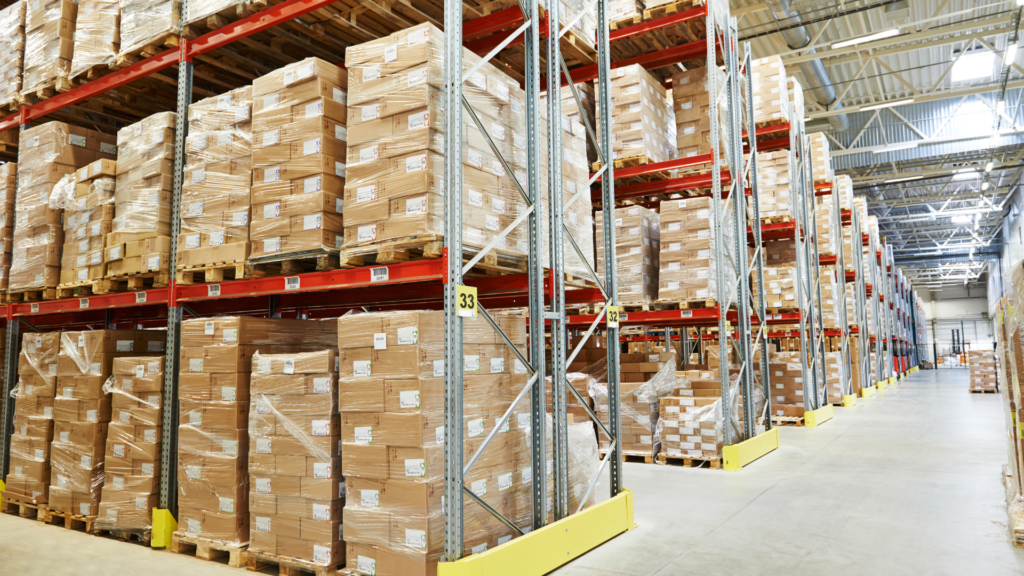Businesses need warehouses to store their goods and raw materials. However, warehouses are not all the same. The volume of goods that are stored will depend on their size, as well as the infrastructure, security, and location. They also need to be stored in a safe place. Warehouses hold many products and need to be protected from theft and vandalism. They also need to have the proper lighting, ventilation, and temperature.
The first step in operations management is to identify the key business processes that must be done each day in order for the warehouse to run smoothly. These business processes, referred to as the primary warehouse processes, are the backbone of the warehouse. Secondary processes aren’t as crucial as the primary ones but are still essential to warehouse operations, including receiving, picking, loading, and boxing product for shipment.
Receiving
One of the primary warehouse processes is receiving. It is the process of obtaining or obtaining and unloading materials, parts, or products. The receiving department usually involves receiving inventory from suppliers or subcontractors, both inbound and outbound. Receiving also happens when a finished good arrives at a buyer’s warehouse. The receiving staff scans the product, invoices it, and places it on the shelf or other storage location.
Put-away
Put-away is one of the primary warehouse operations, and it’s very important that it’s done right. It should be quick, accurate, and seamless in a perfect world. The first step to making put-away a success is to understand your put-away process. Does the process work well for your team? If your put-away processes aren’t quite in sync, then your team’s efficiency can be severely hampered. Putting away a product before it ships saves space in the warehouse and inventory space and reduces how much needs to be shipped. It means less handling, making it easier to transport to a warehouse and saving on shipping costs.
Storage
Managing storage is crucial in warehouse operations, especially as companies expand and see a rise in inventory and orders. With the increasing demand for picking, packing, and shipping, businesses often face challenges in maintaining efficient shipping times while keeping costs in control. Storage stands out as a cornerstone process in warehouses, and effective inventory management emerges as a key strategy to streamline operations. Many businesses opt for storage services to serve as their warehouse space. Additionally, platforms like https://storagelocator.co.uk/ (or something similar) provide convenient options for finding cost-effective storage solutions tailored to specific needs. This approach offers businesses an efficient means to store vital inventory while optimizing overall operations.
Picking
Picking is one of the primary warehouse processes, and as a warehouse manager or supervisor, if you know how to make this process more efficient, you can reduce overall pick times, improve warehouse productivity, and reduce your overall fulfilment costs. And, as always, if you are looking to save money on warehouse equipment, you want to look for what is available refurbished. Picking as a warehouse process has many advantages. It saves on storage space, eliminates the cost of pallets and trolleys, and even improves the ergonomics of the picking process. However, picking also has some disadvantages. It is very labour-intensive and can result in high labour costs. Due to poor picking processes, goods picked and lost can lead to inventory inaccuracies and additional costs.
Packing
Warehouses can be big and busy places. There aren’t many buildings that can fit more boxes and vessels inside than a warehouse. That size means there are thousands of small items being moved every day. Though it sounds simple, packing is one of the primary warehouse processes, and mistakes are common. These mistakes can lead to damaged goods, lost orders, and unhappy customers. Packing, especially primary packing, plays an important role in warehouse operations. The primary packing processes include unpacking, repacking, loading, checking, and meter reading. A temporary solution to the prevalence of damaged goods would be to store the extra goods in a makeshift warehouse space. This space can be readily set up and disassembled at convenience. One way in which this makeshift space can be constructed is through the use of portable garages. In this way, the business wouldn’t have to resort to the previous packing speed, thereby eliminating the needless hurry. And at the same time, maintaining the quality of packaged goods. At the end of the day, warehouse operators need to monitor these functions to ensure that the warehouse operations are operating in a smooth and effective manner.
Shipping
Shipping is the primary warehousing process, and the costs involved in performing these functions must be carefully managed. Your company’s shipping department is responsible for delivering the products your customers ordered. Your warehouse personnel is responsible for loading the pallets onto trucks and sending them to distribution centres and ultimately to customers. Shipping is one of the core processes in warehouses around the world. The roles of shipping are constantly changing as companies seek to cut costs while improving efficiency. In many cases, it is broken into individual processes, each with its own set of challenges it tries to overcome.
Amidst the hustle of loading and unloading cargo onto trucks, it’s imperative to acknowledge the importance of comprehensive truck insurance policies. These policies serve as a safeguard against the risks that exist in transportation operations. From accidents on the road to theft or damage of goods in transit, the potential liabilities are extensive. Ensuring that the trucks utilized for shipping cargo are covered by a proper insurance policy is not just a prudent measure; it’s an essential component of risk management. In lieu of this, understanding How to Choose the Right Truck Insurance is an integral part of business operations.
The warehouse is the heart of every business. The warehouse processes include inbound and outbound processes, as well as receiving, picking, packing, and shipping. Warehouse management is one of the most important tasks in any company. One of the aspects that warehouse management will have to take into consideration is the relocation of the warehouse. Sometimes, the business may have to plan this move due to a myriad of reasons, from cost optimization to lease expiration. The need for such a relocation may also have been prompted by the business having to comply with regulatory requirements, for example. In any case, the business operations will be disrupted with having to move their warehouse and so, effective management, communication and training are crucial to mitigate these challenges and ensure a smooth transition. As such, in order to help mitigate such challenges, there are professional movers who can help businesses with relocating their warehouses. Finally, proper planning, testing and implementation of new processes and systems can help the warehouse management team capitalize on the potential benefits of the new facility, such as increased efficiency, better layout and improved technological capabilities.
In the vast landscape of warehouse management, primary processes such as receiving, put-away, storage, picking, packing, and shipping are the threads that weave the fabric of operational efficiency. From the moment goods arrive at the warehouse to the final dispatch to customers, each step holds significance in maintaining smooth operations. Put-away processes ensure optimal space utilization and inventory management, while storage solutions provide the foundation for streamlined operations and cost-effective inventory management. Picking and packing, though labor-intensive, are pivotal for ensuring accurate order fulfillment and customer satisfaction. Yet, amidst these crucial processes, shipping stands out as the ultimate bridge between warehouse and customer, demanding meticulous attention and proper risk management, including robust truck insurance policies to safeguard against potential liabilities on the road.
As businesses navigate the complexities of warehouse operations, it’s essential to recognize the interdependence of these processes and the overarching impact they have on the company’s success. By prioritizing efficient workflows, investing in proper infrastructure, and implementing comprehensive risk management strategies, warehouses can serve as not just storage hubs but as dynamic engines driving business growth. Ultimately, the heart of every successful enterprise beats within the warehouse, where meticulous planning and execution ensure the seamless flow of goods from supplier to customer, underscoring the vital role of warehouse management in the modern business landscape.


